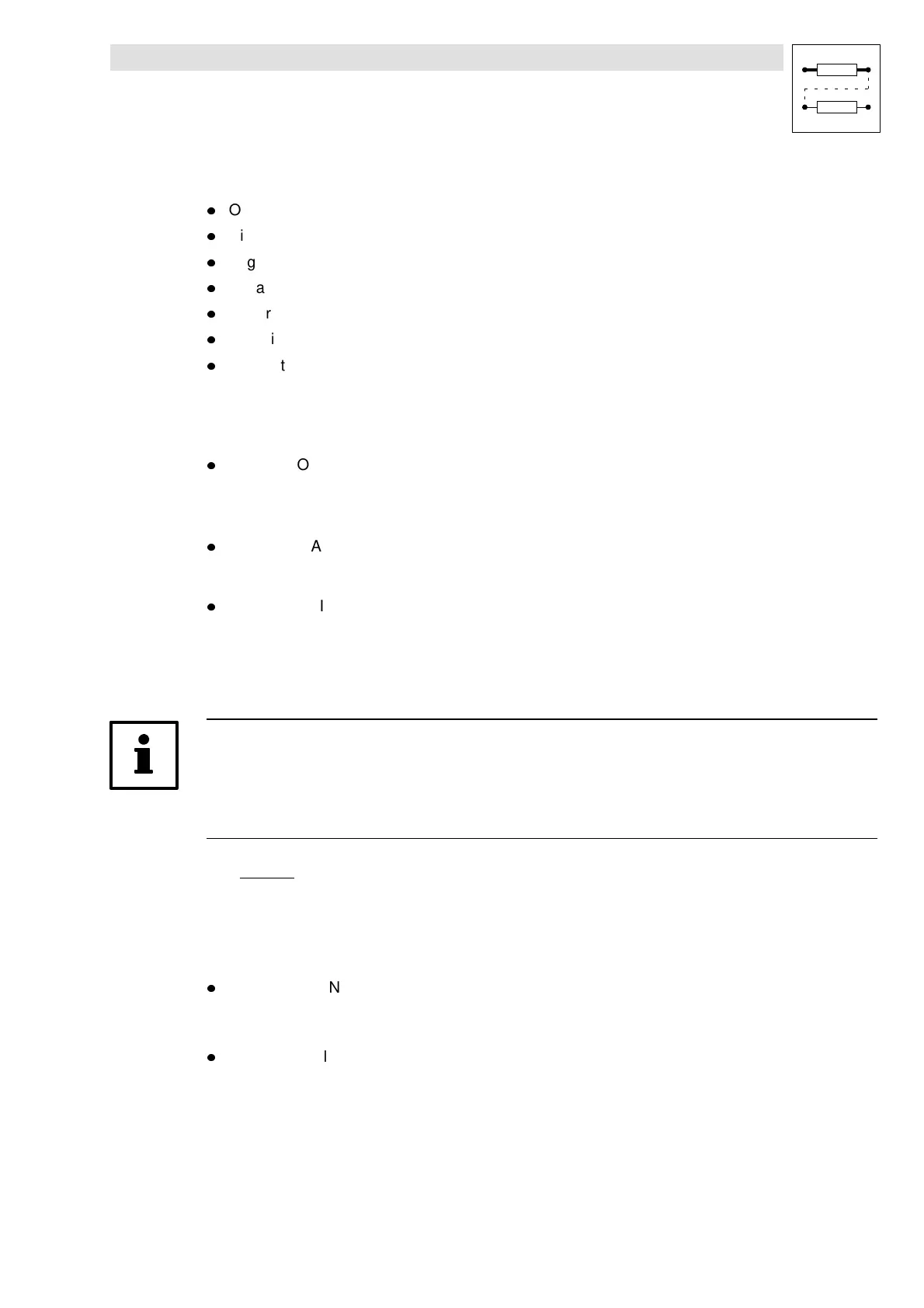Function block library
7-79
SHB9300CRV EN 2.0
Principle of operation
l
Overload monitoring
l
Disengage clutch
l
Engage clutch
l
Engage clutch immediately
l
Set drive back to open position
l
Set drive to target position
l
Latch at set position
7.6.18.1 Overload monitoring
The clutch function can be activated if torque and/or speed overload occurs.
l
CLUTCH-OL-DET = HIGH (e.g. assign to FIXED1):
Overload monitoring is active
– CLUTCH-OL-DET = LOW:
Monitoring only sets CLUTCH-OL = HIGH
l
CLUTCH-MACT:
Assign the actual value of the value to be monitored (e.g. MCTRL-MACT in configuration
10200). The input signal is processed further as absolute value.
l
CLUTCH-MLIM:
Determination of the monitoring threshold.
– CLUTCH-MACT > CLUTCH-MLIM:
Output CLUTCH-OL = HIGH (independently of input CLUTCH-OL-DET)
The output remains at HIGH as long as a L H-signal occurs at the input of
CLUTCH-CLOSE.
Note!
Code C1412/3 is used to set adelay time whichdetermines the timewhenthe overload is indicated.
If normalload conditions canbe achieved whilethedriveis being inthe delayperiod, themonitoring
will be reset.
This will not be entered in the history buffer.
7.6.18.2 Disengage clutch
Unlike the mechanical clutch, the CLUTCH function only separates the drive from the master value
or the profile.Thus it is possible to decelerate the drive to standstill in a controlled way.
l
CLUTCH-OPEN = HIGH (disengange the clutch):
– Input CLUTCH-CLOSE = LOW or
– Activation of the overload monitoring (see chapter 7.6.18.1)
l
Speed control to standstill (CLUTCH-NSET)
The output CLUTCH-NSET provides a corresponding speed setpoint with which the drive is
decelerated to standstill.
The deceleration time can be set under C1412/1.

